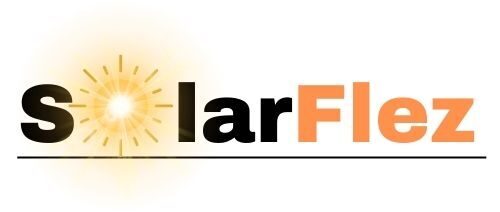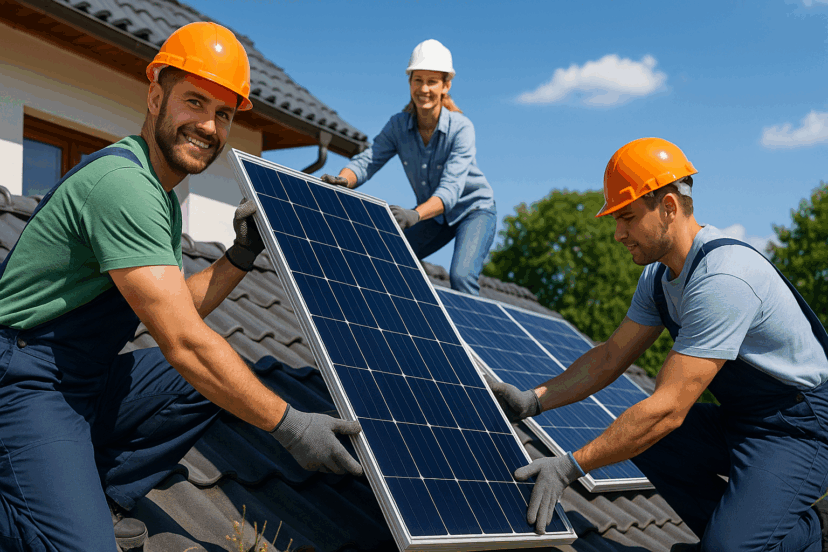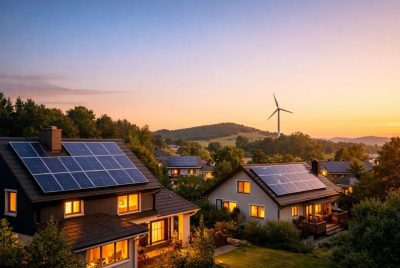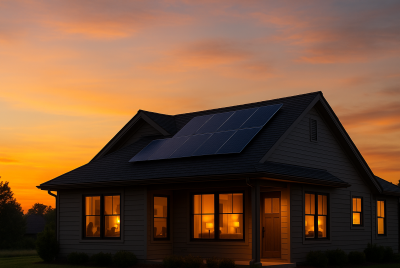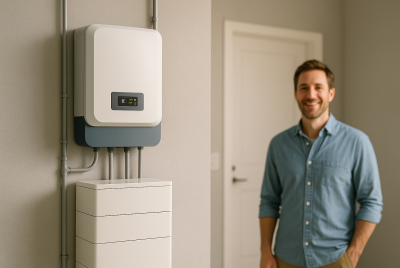Different Types Of Solar Panels: Which One Is The Best For Your Home?
Are you considering making the transition to solar power but are unsure which kind of solar panel is best for you? You’re not by yourself. With so many different types of solar panels on the market today, choose the right one can be difficult. Depending on your home setup, energy requirements, and budget, each type offers a different set of benefits.
We’ll go over the primary kinds of solar panels in this guide, their differences, and which one would be the best choice for your house. Let’s get started and simplify your solar journey!
What Are the Most Popular Types of Solar Panels?
When people talk about types of solar panels, they’re usually referring to three main kinds: monocrystalline, polycrystalline, and thin-film. Let’s study each in more detail.
Monocrystalline Solar Panels
Monocrystalline panels are often recognized by their sleek black appearance. They’re made from a single, pure crystal structure, which makes them highly efficient.
Key Features:
- Efficiency rates between 18% and 22%
- Space-efficient, perfect for smaller roofs
- Long lifespan, often 25 years or more
Best For: Homeowners who want maximum power in a limited space and are willing to invest a little more upfront.
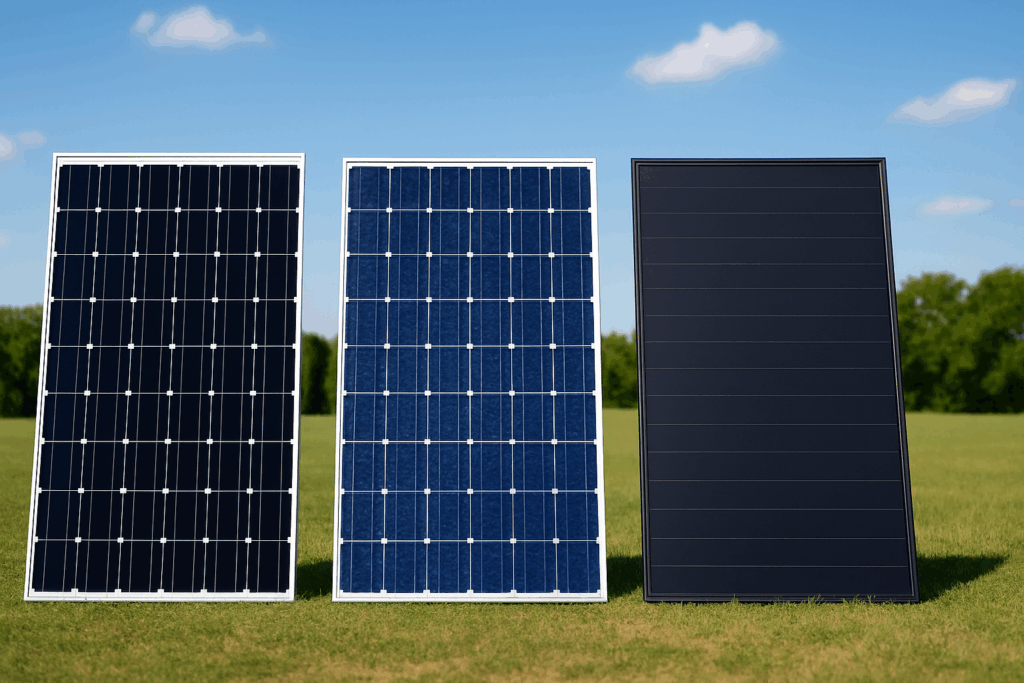
Polycrystalline Solar Panels
These panels are easy to spot because of their bluish tint. They are marginally less efficient than monocrystalline panels because they are composed of many silicon crystals that have been fused together.
Key Features:
- Efficiency rates between 15% and 17%
- More affordable than monocrystalline
- Slightly larger panels needed for the same power output
Best For: Budget-conscious homeowners with plenty of roof space.
Thin-Film Solar Panels
Thin-film technology looks completely different. These panels are lightweight, flexible, and can even be integrated into building materials like windows and roofs.
Key Features:
- Lower efficiency rates around 10% to 13%
- Extremely lightweight and flexible
- Easier installation, even on unconventional surfaces
Best For: Large installations where space isn’t an issue or innovative design needs like RVs or custom projects.
Comparison Table: Types of Solar Panels at a Glance
| Type | Efficiency | Cost | Lifespan | Best Suited For |
| Monocrystalline | 18–22% | Higher | 25+ years | Small roofs, high energy needs |
| Polycrystalline | 15–17% | Moderate | 20–25 years | Budget-conscious homeowners |
| Thin-Film | 10–13% | Lower | 10–20 years | Large-scale or unique design projects |
Recommended Solar Panel Products
If you’re ready to explore your options, here are some highly-rated solar panel kits and systems worth considering:
- Renogy 100 Watt 12 Volt Monocrystalline Solar Starter Kit
Ideal for beginners, with high-efficiency panels and all essential components included.
👉 View Product Here - HQST 100 Watt Polycrystalline Solar Panel Kit
A reliable and budget-friendly kit, perfect for homes, RVs, and boats.
👉 View Product Here - Topsolar Flexible Thin-Film Solar Panel 100W
Lightweight and bendable, perfect for uneven surfaces like RV rooftops and cabins.
👉 View Product Here - Jackery SolarSaga 100W Portable Solar Panel
Great for mobile setups, camping, and emergency backup; folds neatly for easy transport.
👉 View Product Here - SunPower Flexible 100 Watt Monocrystalline Solar Panel
Premium-grade flexibility and top efficiency from one of the most trusted solar brands.
👉 View Product Here - BougeRV 9BB Monocrystalline Solar Panel 200W
Extra power for bigger energy needs, built with durable tempered glass for long-lasting performance.
👉 View Product Here - WEIZE 200 Watt 12 Volt Solar Panel Starter Kit
Dual panels for higher output, easy to set up with charge controller included.
👉 View Product Here
Still exploring your options? You can discover top-rated solar solutions here and find the perfect fit for your home, whether you’re looking for maximum efficiency, affordability, or flexible design.
Scientific Research: How Solar Panel Types Perform in Real-World Conditions
When choosing between the different types of solar panels, it’s helpful to look at what scientific research says about their performance. Here are two important studies that provide real-world insights:
Experimental Comparison of Solar Panel Technologies
A study published in ScienceDirect conducted an experimental comparison of monocrystalline, polycrystalline, and thin-film solar panels under various environmental conditions. Researchers found that monocrystalline panels consistently delivered the highest efficiency rates. Interestingly, thin-film panels showed better performance in lower light, offering an advantage in cloudy or shaded areas. This makes monocrystalline a top choice for maximum output, while thin-film may excel in specific niche applications.
Solar Panel Performance in Hot Climates
Another comprehensive study on ResearchGate evaluated the performance of these three solar technologies over a full year in Egypt’s intense climate. The results again showed monocrystalline panels leading in overall efficiency. However, thin-film panels outperformed both crystalline types when temperatures soared, making them a strong contender in particularly hot, arid regions.
Key takeaway: If you live in a hot, sunny climate, thin-film panels might offer surprising advantages. But for most homeowners, monocrystalline remains the gold standard for efficiency and durability.
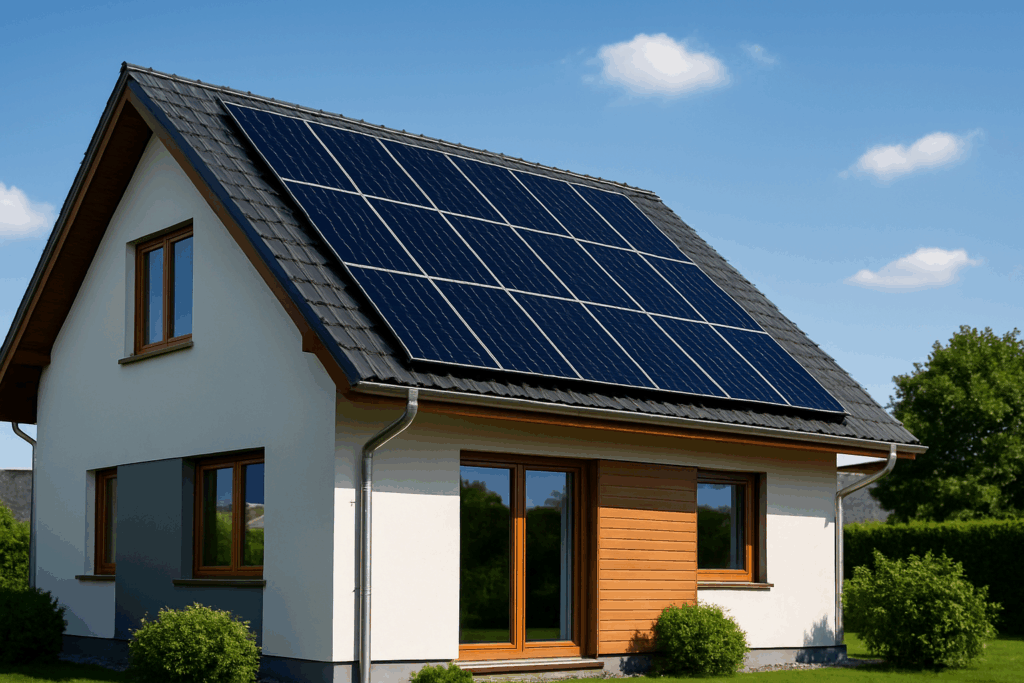
Factors To Consider Before Choosing
Choosing the right type of solar panel for your home goes beyond just efficiency ratings. Here’s what you should think about:
1. Roof Space
If you have limited roof space, monocrystalline panels are likely your best bet due to their high efficiency.
2. Budget
Polycrystalline panels offer great performance without the premium price tag.
3. Aesthetic Preferences
Some homeowners love the clean, black look of monocrystalline panels. Others are less concerned with appearance.
4. Installation Surface
Need something ultra-lightweight for an RV, boat, or custom structure? Perhaps thin-film panels are ideal.
What Kind of Solar Panel Is Ideal for Your House?
There’s no universal answer because it depends on your priorities. However:
- Go Monocrystalline if you want the best efficiency and sleek aesthetics.
- Go Polycrystalline if you’re watching your wallet but still want good performance.
- Go Thin-Film if flexibility and weight matter more than efficiency.
Whatever you choose, you’ll be taking a big step toward energy independence!
Frequently Asked Questions (FAQs)
1. What is the most efficient type of solar panel?
Monocrystalline solar panels are the most efficient, offering up to 22% efficiency.
2. Are polycrystalline panels bad?
Not at all! They offer a good balance between cost and performance, making them a smart choice for many homeowners.
3. Are thin-film panels as durable as other kinds?
When compared to crystalline panels, thin-film panels typically have a lower lifespan of 10–20 years.
4. Is it possible to combine different kinds of solar panels?
While technically possible, it’s generally not recommended because mixing can lead to efficiency losses.
5. Are solar panels useful in overcast conditions?
Yes! Even in cloudy regions, solar panels can produce significant energy throughout the year.
Final Thoughts
Understanding the different types of solar panels is key to making a smart, long-term investment for your home. Whether you prioritize efficiency, budget, or design, there’s a solar solution ready to fit your needs.
Ready to harness the sun’s power? Start by picking the right solar panel for your home—and watch your energy bills shrink while your eco-cred soars!
